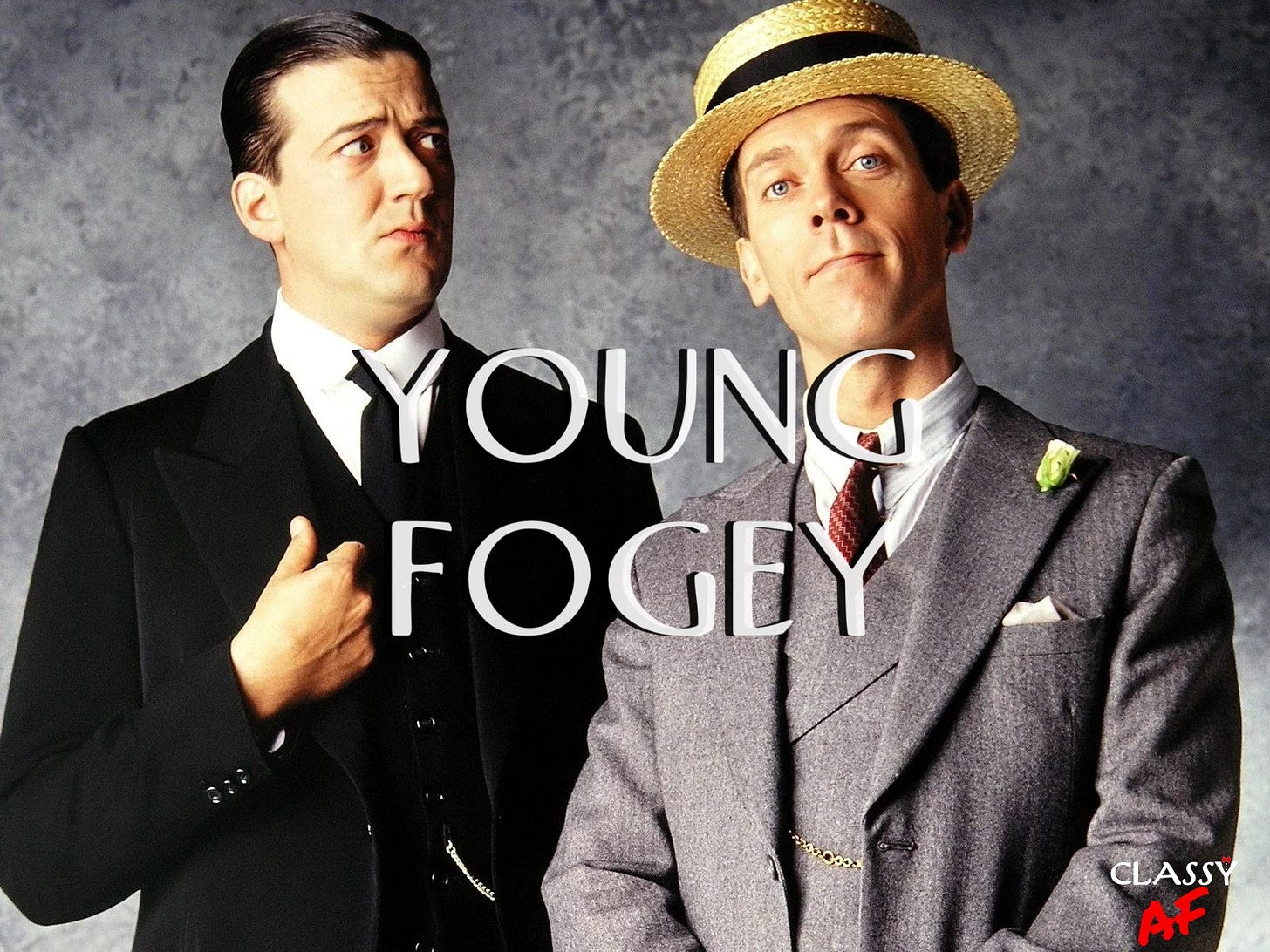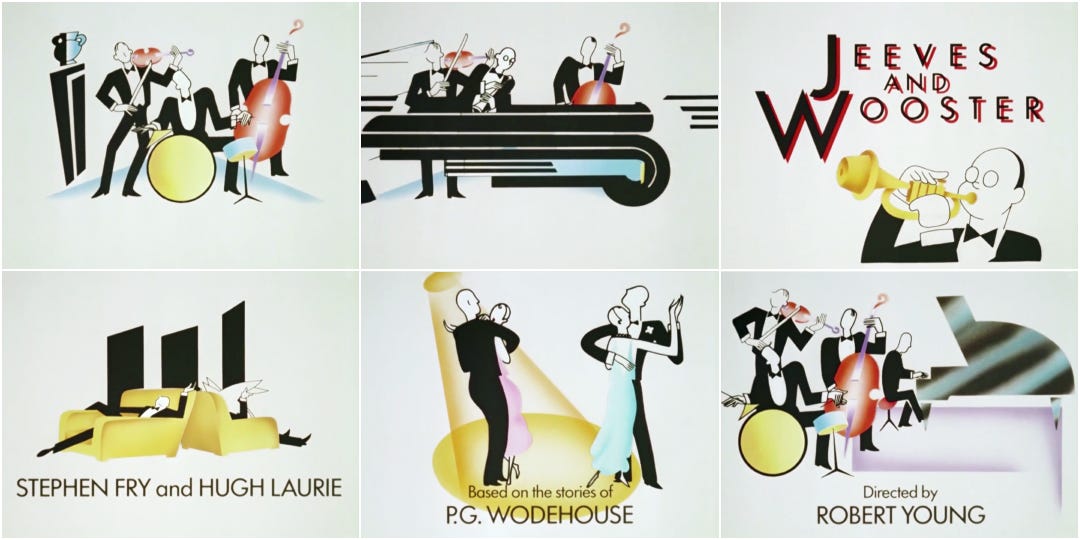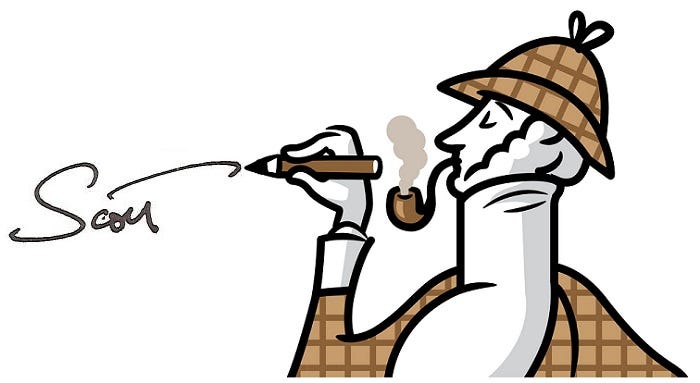Young Fogey
There’s something classy about some of the clothing styles of the past.
In particular, the style in the 1930s has elements that style experts would call classic: lapels that weren’t too wide or narrow, and silhouettes that were neither baggy nor form-fitting.
We observe a certain element of timelessness to them; the outfits could seem just as home in the 2020s as they were nearly 100 years ago.
Of course, dated elements like spats, stiff collars, and boater hats seem out of place today.
In the early 2000s I was walking through the Public Garden in Boston and came across two couples enjoying a picnic together. Blankets laid out on the grass, old-fashioned picnic baskets open to reveal a feast. But two things stood out.
First, they were all dressed in the style of the 1920s or 1930s. And they had a modern gramophone to accommodate an iPhone, playing the soundtrack to Jeeves and Wooster, which was perfect. Anne Dudley’s score captures the excitement of the Jazz Era and coming out of the Roaring Twenties.
I’ve always been someone who appreciated classic style. By avoiding the trendy, I build a wardrobe that works in any era. This is something that style pundit Derek Guy talks about on Threads and Twitter, in helpful posts about what men should be looking for in terms of classic style.
Nigel Cleaver does this on Instagram as well, greeting his followers every day from his Ignore at Your Peril shop in Wollaston, England, surrounded by vintage classic menswear.
I wondered if there was a name for similar-minded people — people who appreciate the style of the past and integrate it into the world of today. As it happens, there is something close to it:
Young fogey.
From Keikari comes a definition of the Young Fogey:
“It is difficult to define the Young Fogey. The most obvious trait in him however, is that he likes to pretend that the modern age does not exist and that he is living in another era. Any era will do. The Young Fogey knows that such fondness for past times has nothing to do with weakness and little to do with mere nostalgia or escapism. The Young Fogey is tired of consumerism and of the giant shopping mall world; the Young Fogey rebels against the constant search for ‘the latest thing’. The Young Fogey believes in Pleasantness, Civility, Music, Art, Literature, gentlemen doffing their hats to ladies… and gentlemen having hats to doff in the first place. The Young Fogey knows the importance of grammar and punctuation; generally dislikes modern architecture, enjoys walking and travelling by train, and laments the difficulty of purchasing good bread, cheese, kippers and sausages (see Alan Watkins’ defintion of the Young Fogey).
“The Young Fogey knows that a vinyl record is better than a CD, that a book is better than a laptop, and believes that the telephone worth sleeping outside stores for is a 1935 model in deep black – not a small, silver mobile. The Young Fogey has been known to wail: what has happened to the BBC?”
I kind of like that. Not that I’m a curmudgeon, but at least I can appreciate some of what’s come before. Perhaps you do too.
You can attempt a hand at Young Fogeyism or satisfy your curiosity about it with Suzanne Lowry’s The Young Fogey Handbook. In addition, the guys over at Gentleman’s Gazette seem to have a feel for this kind of thing as well.
If you’re in an acquisitive mood, some of my favorite classic menswear shops on this side of the pond include Ben Silver, J Press, Paul Stuart, and the Andover Shop.
Or you can just hit up vintage and second-hand clothing stores in your area.
Thank goodness for all of these modern ways to discover to be a Young Fogey.
That’s Classy AF.
P.S. Don’t forget: you’re only as young as you feel.










